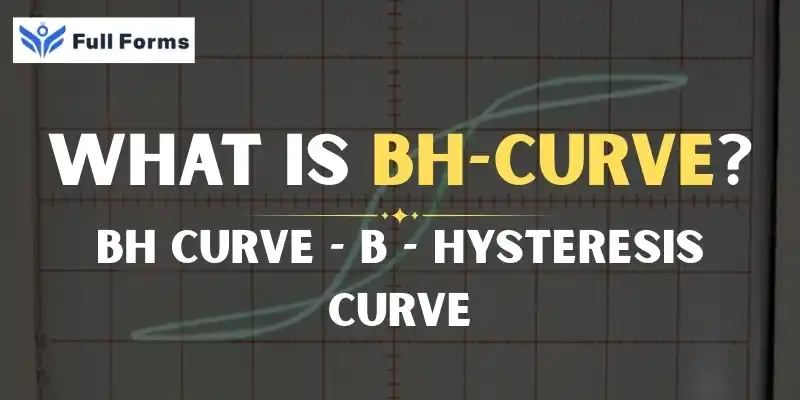B - Hysteresis Curve
(BH Curve)

Description
Meaning of B-Hysteresis Curve in Layman’s Terms
Among the concepts of electromagnetism, the B-Hysteresis curve is an important one. It illustrates how magnets in materials respond to a magnetic field. This might sound complex but gets pretty easily understood. This article will decode the B-Hysteresis curve, why it matters, and its working in an understandable manner.
First, we need to know what the letters "B" and "H" mean in the B-Hysteresis curve
In this case, B stands for the magnetic flux density and H stands for magnetic field strength.
Magnetizing Field Strength (H)
It’s the intensity of the effort required to magnetize a magnetic material most often to pass an electric current through a coil.
Magnetizing Flux Density (B)
It shows how much magnetic field has been actually imparted within the material due to the magnetizing force.
When magnetic material is magnetized
The B-H curve will show the relationship between B and H. It is known as ‘hysteresis’ because the material does not immediately return to its original state after the magnetizing force is removed. Instead, it ‘remembers’ some of the magnetic properties. The delay or lag is termed hysteresis.
What’s with this B-H Curve of Hysteresis?
Let’s see how this curve is drawn and what happens.
Initial Point
The magnetic material is demagnetized initially. Therefore, both B as well as H become zero.
Increase in H
This also makes B bigger, because when the strength of the magnetic field keeps rising, the magnetic flux density, B, starts to rise. The material becomes more magnetic.
Saturation Point
Beyond a certain point increasing H does not increase B by much more – this is technically known as magnetic saturation – the material cannot take any more magnetism.
H → 0
Let H be slowly brought back to zero; B does not return completely to zero. The material still retains slight magnetic properties. Residual magnetism or remanence is the leftover magnetism.
If you apply H in the other way round direction
The flux density B starts to decrease and finally reaches zero. This particular point is termed as coercive force or coercivity.
How much reverse magnetic field does it take to completely demagnetise the material?
If you go on to apply H in opposite directions, the material will become saturated once more, but this time in the opposite direction.
Full Cycle
If you lower H back to zero and increase it in the opposite direction to reuse total material, it shall go all the way around. This loop material is depicted by the B-Hysteresis curve.
What makes the B-Hysteresis Curve so important?
The B-Hysteresis curve has a practical application other than being just an academic interest and is found useful in many technological as well as business applications.
Engineers
Engineers can then fix by the curve to learn what materials to use in building motors, transformers, and generators. These applications do most excellent with small hysteresis loops materials because they consume less energy.
Memory Devices
Some magnetic materials with large hysteresis loops are employed in hard drives and alike memory storage devices. It helps in digital information storage in that they can “remember” magnetic states.
Energy loss
The area enclosed within a hysteresis loop gives the energy that is lost during the process of magnetizing and demagnetizing. This is known as hysteresis loss. The lower this is, the better the functioning of electrical equipment.
Soft and hard materials
People often classify materials based on their behavior in a B-H curve.
Soft magnetic materials have hysteresis loops that are not very wide, can be easily magnetized and demagnetized. Such materials find applications in devices like transformers and electromagnets. Hard magnetic materials have loops that are very wide and remain magnetic for a long time; hence they are used to make permanent magnets.
Conclusion
B-Hysteresis loop is an important method to understand what happens with magnetic materials when they come in contact with magnetic fields. The first appearance may let the observer find it difficult to get the meaning but, in fact, the concept is quite simple. It demonstrates how a material can be magnetized; sustain its magnetism and re-magnetize it. Electrical machines of improved qualities can be made by engineers and scientists; energy could be saved and even, devices which work on the principles of memory could be made, just by a close look at this curve. Hence, the next time that you think or hear about magnetism, remember that it is this B-Hysteresis curve that allows most of the objects we use on a daily basis to function.
